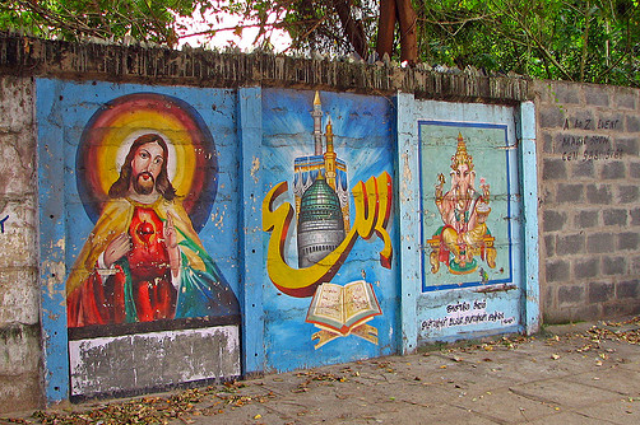
Introduction :
As the war between Israel and Palestine is becoming more and more intense, every other country is ready to jump into war directly or indirectly. There is no doubt that this war has a long history of turbulent past, ongoing tensions from the international conflicts over oil and local over water, cultural politics, identity, territory, etc. but religious sentiment is always one of the most prominent reasons behind wars in the Middle East and contemporary war is no exception. Middle Eastern nations can be characterized by comparatively low levels of economic liberalization and high levels of authoritarianism. Arabic is the most widely spoken language and Islam is the most widely practiced religion in the Middle East. There is a division between secular republics and conservative monarchies. The Middle East since the late 1970s led to the rise of violent religious extremism and Islamic republicanism, which today threaten both secular and conservative regimes. It is unbelievable in the 21st century that religious identity or sentiment is much more important than humanitarian causes. Every media is flooded with the history of war, reasons behind war, who is winning the war, and all of that. In all of this chaos, one needs to understand why wars backed by religion are more common in the Middle East than in any other part of the world. How secularism as an ideology has enabled so many countries in the world, with so many diverse populations and having that many diverse faiths, to coexist together I am not saying that they are clean, there are instances of communalism, terrorism, and riots but not as intense and frequent as wars in the Middle East. India is one of those countries that consider Secularism as its fundamental value and abide by its principles, at the same time there is a lot of debate and confusion about it. Like, secularism was not originally included in the constitution; it was added after the 42nd amendment and earlier it was not part of the constitution, India has committed a big mistake by being secular, secularism gives rise to communalism and vote bank politics, does secular mean ‘Dharmanirpeksha’ or ‘Panthnipeksha' ’?, up to the recent claim by the opposition that ‘Socialist and Secular’ is removed from new copies of the constitution. The debate is never-ending and maybe some points are valid also but, we need to understand that Indian Secularism is much more different and inclusive than other countries. Much of the Indian population interprets secularism as a negative value because most of the time they are not willing to understand the real meaning of the ideology and that’s why we see a lot of debate around this topic. Not just in the context of ongoing war but also as an aware citizen it becomes more important to understand the real meaning of secularism in the Indian context as well as in the Western context and then debate and decide your stand. So let's first start by,
What is the meaning of Secularism?
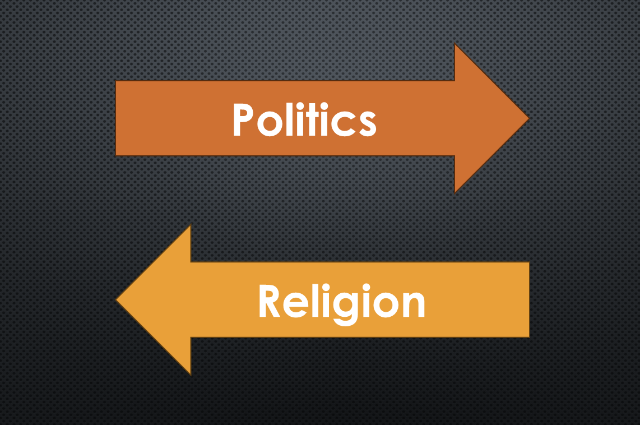
First, we will try to understand the literal meaning of secularism in the Indian context. In Hindi, it is translated as 'Dharmanirpekshta'. Now the word 'Dharma' itself has more than one meaning in different contexts. We will mainly try to understand the four meanings, which are considered important in India. The first meaning of 'Dharma' means ‘Nature’(swabhav) e.g. fire's nature is to burn something, water's nature is to quench someone's thirst, etc. The second meaning of ‘Dharma’ is ‘Duty or responsibility (kartavya or naitikta) e.g. duties of a king are known as ‘Rajdharma’, duties or responsibilities of the student are known as ‘Vidyarthidharma’, etc. and here the first debate start. Mahatma Gandhi's famous quote, “Dharma vihin rajniti mrut deh ke saman hai jise nasht kar diya jana chahiye”. Which translates as politics without religion is like a dead body that should be destroyed. Many people interpret this quote as that Gandhiji wanted religion in politics. They understand this Dharma as religion and then they start debating that even Gandhiji wanted religion to interfere in politics. Here in this quote, Gandhiji uses Dharma in the context of duty or responsibility, not religion. Gandhiji wanted people to come into politics with the notion of duty or naitikta. Gandhiji saw secularism as mandatory for bringing about a national movement. He wrote extensively on secularism and gave several speeches, requesting people to maintain communal harmony. Gandhi's religious ethos made him consider all human beings as equal, making him a secularist at the core and that’s why this claim is baseless. These two meanings of Dharma have nothing to do with secularism. The third meaning of Dharma is ‘cult or sect or religion’, e.g. Hinduism is religion, and Vaishnavism, and Shaivism are its sects, just like Islam is religion and Sunni, and Shia are its sects. The fourth meaning of Dharma is a group of people who believe in some kind of supernatural power e.g. god, heaven, soul, spiritual liberation, etc. and these people follow specific spiritual practices which are approved by their religion to connect to supernatural powers or to attain liberation. The third and fourth meanings are used as Dharma while understanding the concept of secularism. The term “Secular” means being "separate" from religion, or having no religious basis.
Now we will try to understand how the concept of secularism originated in the first place. The first to use the already-extant word "secularism" in a modern sense, was the British agnostic (a person who holds the view that any ultimate reality (such as God) is unknown and probably unknowable) writer George Holyoake. According to Holyoake the tenets of secularism are, to be neutral towards religion; believing in this world rather than some other world( heaven) concept; one should believe in science and rationality; morality should be the product of rational and scientific thinking rather than based on religion which is called as secular morality. In this sense, secularism can apply to individuals, society, or the state. In this article, we are focusing on the state. Western secularism advocates the total separation of state from religion which in India is known as negative secularism. In the West secularism connotes a complete separation between religion and the state. The “State” and the “religion” have their separate spheres and neither the state nor the religion shall intervene in each other’s affairs. Similarly, the state cannot aid any religious institution. It cannot give financial support to educational institutions run by religious communities. Nor can it hinder the activities of religious communities, as long as they are within the broad limits set by the law of the land. Now try to understand the relationship between state and religion.
Different models of state about religion :
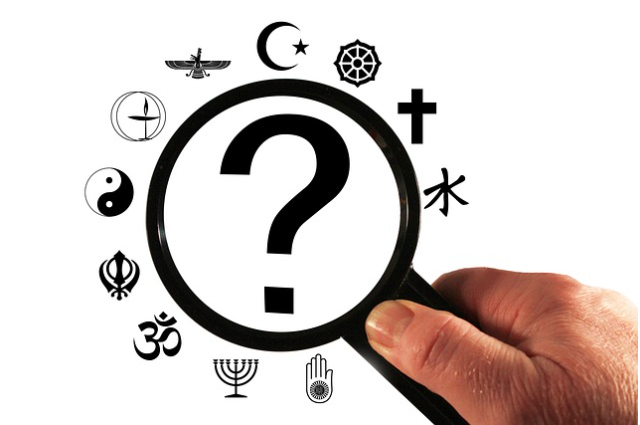
Image by Gerd Altmann from Pixabay
- Theocracy: The word theocracy means "the rule of God". Theocracy is a form of government in which one or more deities are recognized as supreme ruling authorities, giving divine guidance to human intermediaries who manage the government's daily affairs, or in which human leaders who follow a certain religion are thought of as the ideal and only class of ruler. The religious book is considered as their constitution or equal to the constitution. The head of religion is considered the head of state and people enjoy religious privileges. e.g. Vatican City, Mount Athos, Tibet, etc. Iran has been described as a "theocratic republic and its constitution has been described as a "hybrid" of theocratic and democratic elements. Afghanistan was an Islamic theocracy when the Taliban first ruled Afghanistan from 1996 to 2001 and since their reinstatement of the Islamic Emirate of Afghanistan in 2021, Afghanistan is an Islamic theocracy again.
- Confessional state / religious state: It is known as a State influenced by religion and religions are official in such states. Government-sanctioned establishments of a religion, but the state does not need to be under the control of the clergy (as in a theocracy), nor is the state-sanctioned religion necessarily under the control of the state. In the Middle East, the majority of states with a predominantly Muslim population have Islam as their official religion, though the degree of religious restrictions on citizens' everyday lives varies by country. An Islamic republic is the name given to several states that are officially ruled by Islamic laws, including the Islamic Republics of Iran, and Pakistan. Saudi Arabia defines itself as a sovereign Arab Islamic state with Islam as its official religion. However, some critiques describe Saudi Arabia as an Islamic theocracy. Religious minorities do not have the right to practice their religion openly. Conversion from Islam to another religion is punishable by death as apostasy. e.g. Denmark, Norway, Sweden, England, Bhutan, Sri Lanka, Israel, etc.
- Atheist state/ Anti-religious state: An atheist state is a term used to describe a government or political system that officially promotes atheism or is characterized by the absence of religion. In such a state, there is typically a separation of religion from government affairs, and religious beliefs are not endorsed or supported by the state. It's important to note that the concept of an atheist state can vary in practice and degree, with some countries having strict secularism while others may allow religious freedom alongside atheism. There are a few historical examples of states that have been officially atheistic or strongly secular. The Soviet Union, under its various leaders, promoted state atheism and actively discouraged religious practices. Religious institutions were often repressed, and atheism was propagated through education and propaganda. However, after the collapse of the Soviet Union, religious freedom was allowed, and many religious groups experienced a resurgence. China has adopted a policy of official state atheism. The People's Republic of China is officially an atheist state, but the government formally recognizes five religions: Buddhism, Taoism, Christianity (Catholicism and Protestantism are recognized separately), and Islam.
Models of secular state:
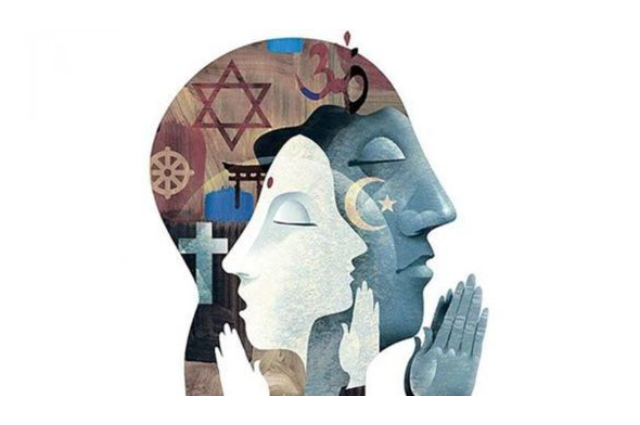
- Negative Secularism: The government is completely separated from religion. The government does not play any role in controlling the activities of religious institutions. Under ‘negative secularism’, the state says that nobody can display their religious identity in public. e.g. France in 2004, a law was promulgated, banning school children from wearing any overt signs or clothes that would betray their religious affiliation. This was an effort to create a unique school space, where everyone would look equal and “religiously anonymous” - no crosses, no headscarves or burqas, no turbans, and no Jewish kippahs (skullcaps).
- Positive secularism: Positive secularism, often referred to as "inclusive secularism" or "active secularism," is a concept that emphasizes the government's active promotion of religious tolerance, diversity, and equality, rather than merely maintaining a separation between religion and state. Positive secularism seeks to create an environment where people of all religious beliefs, as well as those with no religious affiliation, are treated equally under the law and have the freedom to practice their faith or lack thereof. This includes protection from discrimination based on religion or belief. While positive secularism promotes religious diversity, it also maintains the state's neutrality in religious matters. Positive secularism often includes mechanisms to protect the rights of religious or belief minorities, ensuring they are not marginalized or oppressed by the majority. The government does not favor any particular religion and does not endorse or fund religious activities. Encouragement of dialogue and understanding between different religious communities is an integral part of positive secularism, fostering cooperation and harmony among diverse groups. e.g. India, USA, UK, etc. believes in peaceful coexistence of different religions while being neutral towards all religions.
Now that we understand in which sense India is secular, we will discuss Indian secularism in detail and try to evaluate whether India is a secular state or not.
Indian Secularism: History
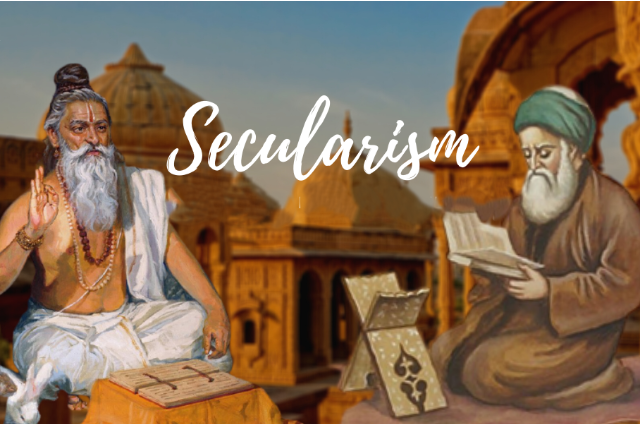
Indians believe that secularism is an exotic concept planted in India from the West, but it is not true. India has a rich history of religious pluralism and tolerance that dates back thousands of years. In ancient India, different religious and philosophical traditions, such as Hinduism, Buddhism, Jainism, and others, coexisted and often influenced each other. The Mauryan Emperor Ashoka is known for promoting religious tolerance and non-violence in the 3rd century BCE. Emperor Ashoka was the first great emperor to announce that the state would not prosecute any religious sect. In his Rock Edict, Ashoka appealed not only for the toleration of all religious sects but also to develop a spirit of great respect toward them. In medieval India, the Sufi and Bhakti movements bond the people of various communities together with love and peace. The leading lights of these movements were Khwaja Moinuddin Chisti, Baba Farid, Sant Kabir Das, Guru Nanak Dev, Saint Tukaram and Mira Bai, etc. In medieval India, religious toleration and freedom of worship marked the State under Akbar. He had several Hindus as his ministers forbade forcible conversions, and abolished Jizya. Even before Akbar, Babar had advised Humayun to “shed religious prejudice, protect temples, preserve cows, and administer justice properly in this tradition.” The spirit of secularism was strengthened and enriched through the Indian freedom movement too, though the British have pursued the policy of divide and rule. The Indian freedom movement was characterized by secular tradition and ethos right from the start. In the initial part of the Indian freedom movement, liberals like Sir Feroz Shah Mehta, Govind Ranade, and Gopal Krishna Gokhale by and large pursued a secular approach to politics. Gandhiji was the most powerful impulse of secularism in our country. Gandhiji was of the view that there should not be any state religion. ‘Even if the whole community had one religion, state interference would probably always be unwelcome’. Gandhiji’s secularism was based on a commitment to the brotherhood of religious communities based on their respect for and pursuit of truth, whereas, J. L. Nehru’s secularism was based on a commitment to scientific humanism tinged with a progressive view of historical change. These views represent that secularism was deeply rooted in Indian history and culture, not just a Western idea.
Indian Constitution and Secularism:
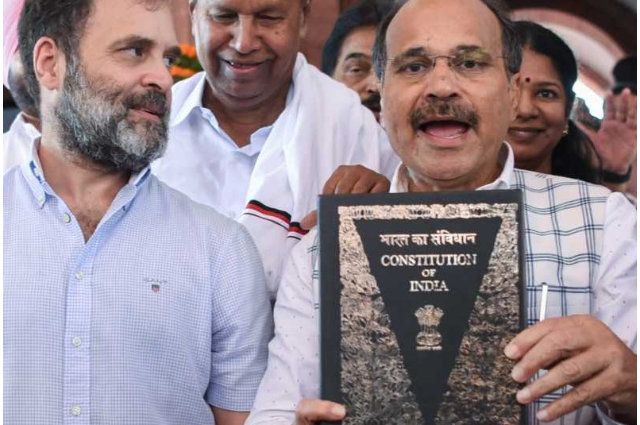
Secularism in India is a fundamental principle enshrined in the Indian Constitution. The Constituent Assembly emphasized the secular foundation of India. The Assembly declared that secularism, as adopted in the Indian Constitution, was not an anti-religious concept; instead, it prevented discrimination against citizens based on religion. Dr. B. R. Ambedkar explained secularism in the following words: It (secular state) does not mean that we shall not take into consideration the religious sentiment of the people. All that a secular State means is that this Parliament shall not be competent to impose any particular religion upon the rest of the people. The original frames of the constitution adopted articles 25, 26, and 27 to further secularism. Article 25 provides ‘Freedom of Conscience’, that is, all persons are equally entitled to freedom of conscience and the right to freely profess, practice, and propagate the religion of their choice. Article 26 says every religious group or individual has the right to establish and maintain institutions for religious and charitable purposes and to manage its affairs in matters of religion. Article 27, provides that the state shall not compel any citizen to pay any taxes for the promotion or maintenance of any particular religion or religious institution. Article 28, allows educational institutions maintained by different religious groups to impart religious instruction. Article 29 and Article 30 provide cultural and educational rights to the minorities. Article 15 enlarges the concept of secularism to the widest possible extent by prohibiting discrimination on grounds of religion, race, caste, sex, or place of birth. Article 51A i.e. Fundamental Duties obliges all the citizens to promote harmony and the spirit of common brotherhood and to value and preserve the rich heritage of our composite culture. The secular objective of the state has been specifically expressed by inserting the word “ Secular “ in the preamble of the Constitution (42nd Amendment ) Act, 1976. Secularism was already very much embedded in constitutional philosophy. The 42nd Amendment, formally inserted secularism into the preamble, merely making explicit what was already implicit. Secularism was always part of the basic structure of the Constitution. Under this principle, the state is neither religious nor anti-religious. The state does not have any religion and they do not promote any religious activity of a particular community. The state primarily believes in the principles of “Sarva Dharma Sambhava” meaning thereby “all religions are the same” and “Dharma Nirapekshata” which means indifference of the state to religion.
A review of Indian Judiciary on Secularism:
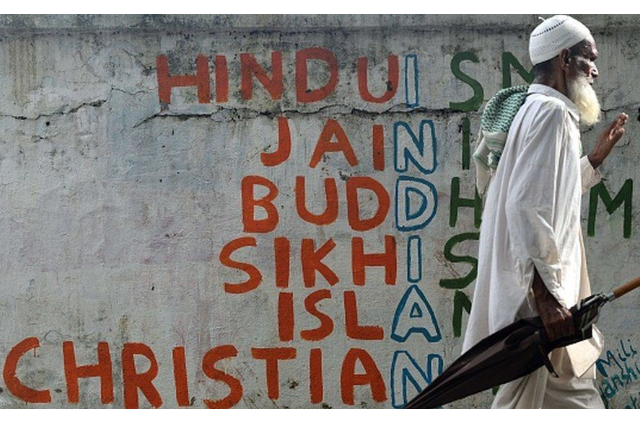 Image by Vajiram and Ravi
Image by Vajiram and Ravi In the absence of a definition of secularism, the Supreme Court of India has explained and elaborated the meaning of Secularism from time to time and tried to protect the secularism of India.
- Kesavananda Bharati vs State of Kerala case (1973): Kesavananda Bharati challenged the Kerala land reforms legislation in 1970, which imposed restrictions on the management of religious property. The case was challenged under Article 26, concerning the right to manage religiously owned property without government interference. The question underlying the case also included, could Parliament alter, amend, or abrogate any part of the Constitution even to the extent of taking away all fundamental rights? The landmark judgment which pronounced that the parliaments cannot alter or disturb the basic structure of the constitution. It was held that, however, the parliament has unfettered power to amend the constitution, but it cannot disturb or emasculate the basic structure or fundamental features of the constitution. It has only the power of amendment and not of rewriting the constitution and it listed a few principles — federalism, secularism, democracy — as being its part.
- S. R. Bommai v Union of India (1994): Supreme Court elaborated on the meaning of secularism. The Court said that secularism means equal treatment of all religions. The Court held that the word 'secular' which was inserted in the Preamble of the Constitution by the 42nd Amendment, highlights the fundamental rights guaranteed in Articles 25-28.
- St. Xavier’s College v. State of Gujarat (1975): The SC held that Secularism neither means anti-god nor pro-god. It just ensures that no one is differentiated based on religion eliminating the concept of God in matters of the state.
- Atheist Society Of India vs Govt. Of Andhra Pradesh (1992): In this case, the petitioner (Atheist Society of India) requested the issuance of a writ of mandamus to order the government of Andhra Pradesh to instruct all relevant departments to forbid the performance of religious rituals at official functions, such as breaking coconuts and chanting mantras, because doing so violates the constitution's secular policy. The petitioner's pleas were rejected by the court because they violated the right to freedom of religion and, if accepted, would go against the fundamental tenet of our Constitution's secularism. It would result in losing freedom of expression, religion, and worship.
- Ms. Aruna Roy And Others vs Union Of India: The Court made a distinction between religious instruction and religious education or study of religion. It said the latter was permissible, and indeed desirable, while the former was banned. Article 28 prohibits religious instruction in state-run educational institutions in India.
All of this judgment gives a clear view that secularism is the core and fundamental philosophy of the Indian Constitution. The Supreme Court made secularism a fundamental value, stronger by the judgments of cases on the basis that Constitutional morality is more important than religious morality. Constitutional morality means adherence to the core principles of constitutional democracy. Constitutional morality is not limited only to following the constitutional provisions literally but is based on values like individual autonomy and liberty; equality without discrimination; recognition of identity with dignity; and the right to privacy. Constitutional morality may sometimes conflict with popular morality or religious beliefs. Conflicts of this nature can lead to social unrest and resistance. For Example: In the Supreme Court’s Sabarimala verdict religious freedom, gender equality, and the right of women to worship guaranteed under Article 14, 21, and 25 of the Constitution was reinstated which struck down the practice of banning entry of women of a certain age to the Sabarimala temple in Kerala as unconstitutional. Shayara Bano vs. The Union of India, better known as the 'Triple Talaq Case', gave India a historical judgment that declared the practice of Triple Talaq to be unconstitutional. The Triple Talaq judgment is widely regarded throughout the jurisdictions as a safeguard against social evils.
The doctrine of “essentiality” was invented by a seven-judge Bench of the Supreme Court in the 'Shirur Mutt' case in 1954 to control religious freedom and to protect the rights of individuals of all religions. It is a contentious doctrine evolved by the court to protect only such religious practices that were essential and integral to the religion. Based on the doctrine of essentiality, the Supreme Court has banned the practices that are not essential parts of religion such as sati, devadasi, bigamy, govadh ( sacrificing cow as a part of religious practice), the use of loudspeakers in mosques.
Challenges and Criticism of Indian Secularism :
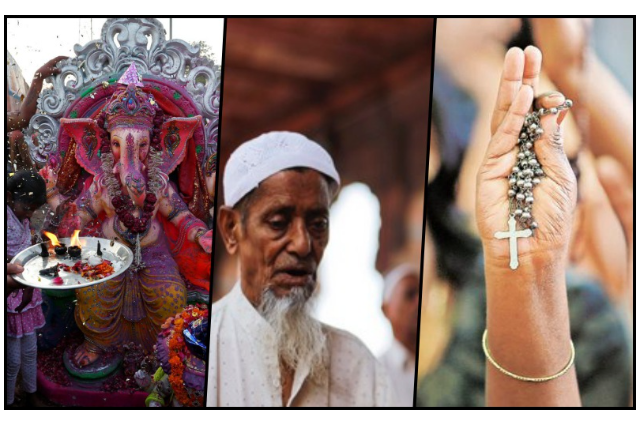
Despite the constitutional commitment to secularism, India has faced challenges in maintaining complete religious harmony. Communal tensions and incidents of religious violence have occurred at various points in the country's history. The delicate balance between respecting religious diversity and maintaining social harmony can be challenging. Nowadays politicians treat caste as a weapon to win the electoral poll. They patronize religion based on the majority existing in the society. Caste can influence the results of the election. Political parties formulate policies based on caste most of the time to gain political status and votes. This may easily therefore take various forms in politics. Most of the time those political parties win elections that are supported by majority religious groups. There is a relationship between caste and politics. In this relationship, it is not only politics that impacts caste, caste also impacts politics in turn. The ruling government tries to provide incentives, various relaxation schemes, and at last reservations to the particular religion. The significance of caste in politics is indicated by the fact that in several states of the country, several political parties can be identified with some castes. Therefore it is now used as a weapon to win the election. People from the same caste do not want to vote the people from different parties as this may prove dominance over them. They fear that a person from a different caste may rule over them and they don't want to be the same. Therefore, they cast a vote for their religious party. This hurts the principle of secularism as willing parties do not get fair chances and particular communities or religious groups become an emerging power. Which may result in the dominance of a particular religion. Therefore casteism may be the biggest challenge for an independent country like India where equality will be at risk. Pratap Bhanu Mehta is a prominent Indian political scientist, scholar, and commentator who has shared his views on various topics, including secularism. Mehta has often pointed out that India's approach to secularism faces unique challenges due to the country's religious diversity. He has argued that secularism in India is not a mere separation of religion and state but a complex concept that involves recognizing and accommodating the various religious communities within the framework of the Indian state. He believes that secularism leads to vote bank politics and communalism. He criticizes this model of flirting with all religions and it makes all communities insecure. Arun Shourie is an Indian economist, journalist, author and politician. He challenged the Indian model of the secular state on the following ground: In a secular state, it is individual rather than community that is the basis of rights and the Secular state does not discriminate: “What can’t be given to all should not be given to anyone” According to Romila Thapar, Indian Secularism should be brought out of the pale shadow of sarva dharma sambhava and should be getting some more bold form of secularism. Some debate whether the Indian state seems to privilege Hinduism over other religions or whether the motive of the constitution writers was obvious to prevent the conversions of Dalits to Christianity or Islam, to “reform” Hinduism to make it palatable to the former untouchables.
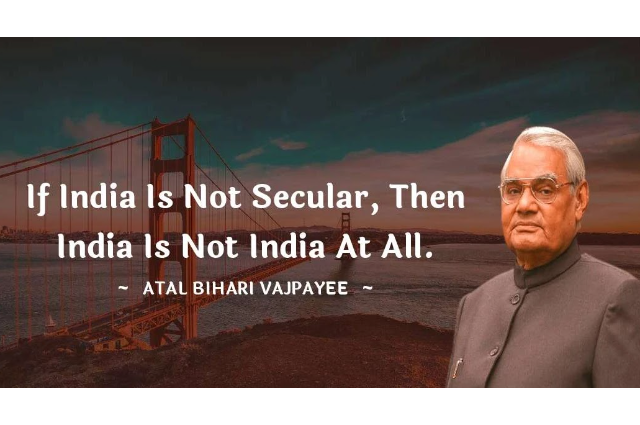
Conclusion:
Secularism is one of the most debatable topics in India. It is not a static term, it is dynamic and it will evolve with time. Society is becoming heterogeneous because of globalization and in such times secularism proves to be a fundamental and eternal value. Diversity is India's Strength and We need to stop seeing Secularism from the perspective of the West. Western secularism typically implies the separation of religion from the state, often leading to a strict and complete secularization of public life, Indian secularism follows a different path. It champions the concept of equal respect and protection of all religions, recognizing the importance of religion in the lives of its people, and fostering a multi-religious society where diverse faiths coexist. This approach acknowledges and respects the religious sentiments of its citizens, contributing to a distinctive tapestry of harmony in a deeply religious society. Furthermore, in the context of the Middle East's ongoing turmoil, India's unique brand of secularism can serve as a valuable example of how a diverse and pluralistic society can navigate religious differences while preserving social cohesion. India's ability to foster interfaith dialogue and coexistence amid its varied religious landscape provides an alternative model for conflict-ridden regions to consider. In a world where religious tensions persist, understanding the Indian model of secularism can offer hope and inspiration for societies grappling with religious divisions. While challenges remain, India's secularism, rooted in its historical and cultural diversity, is a testament to the possibility of harmonious coexistence and mutual respect, even in the most complex and diverse religious landscapes. As we observe the ongoing conflicts in the Middle East, India's unique approach to secularism serves as a compelling reminder that peaceful coexistence and religious diversity can thrive side by side.
Reference :
- en.wikipedia.org
- www.drishtiias.com
- www.thehindu.com
- thewire.in
- indiankanoon.org
- www.indiatoday.in
- www.civilsdaily.com
- www.lawbhoomi.com
- scobserver.in
- articles.manupatra.com
- www.jstor.org
